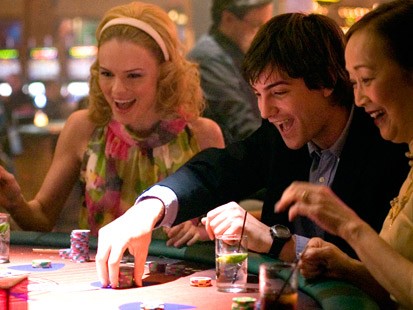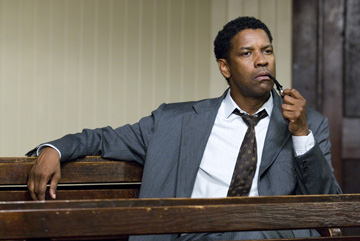Yes Man
Posted on April 7, 2009 at 8:00 am
Carrey-ologists will enjoy poring over the semiotics of “Yes Man,” in one sense a very slight variation of one of Jim Carrey’s biggest hits, 1997’s Liar Liar. In both films, he plays a divorced professional man who has in essence checked out emotionally and spiritually. In the first he simply says whatever will get him what he wants, even if it is not true. He does the same here, except that it’s all the same lie: “I’m busy.” Like Melville’s famous character Bartleby he responds to all offers and invitations, one way or another, “I prefer not to.” Just as in a wish in “Liar Liar” turns him into a man who can only tell the truth, in this film a “no” character commits to saying “yes” to everything, from spam invitations to try out persianwife.com to a very big guy in a bar asking him if he wants to step outside for a fight.
Both films have wives who with new significant others who make the Carrey character feel diminished, and in both a large part of the screen time and all of the humor comes from Carrey’s squirming through the consequences of his reversal and the way he must deal with the larger consequences of his previous bad behavior. As always, Carrey makes some funny faces and uses his rubbery limbs to good comic effect.
But with nearly a decade between the two films, Carrey and Carl, his character, bring a more poignant sense of longing and lost chances. It is significant that this film does not require any hocus-pocus to get the story started. It just establishes that Carrey is a no-guy, feeling sorry for himself and turning down just about everything. Fortunately, he is a bank loan officer, so this tendency has professional benefits. But in his personal life, he says no to his friends and would-be friends (his nerdy boss) to stay home and watch DVDs and feel sorry for himself.
And then one day an old friend suggests that he go to a motivational seminar led by a man named Terrence (played by Terence Stamp, no idea why the character name has two r’s and the actor has just one) who persuades him to start saying “yes.” To everything. That means giving a ride to a homeless guy and going to his boss’s Harry Potter party, taking Korean lessons, and learning to fly. Not to mention approving a lot of loans. It seems to him that there is a pattern because each of those yeses leads to something unexpected and wonderful, the best of all being a free-spirited girl named Alison (Zooey Deschanel), a natural yes-er. Just a hop skip and a jump to the getting-to-know-you montage, the second act complication, and a happily-yessing-ever-after conclusion with a little gratuitous nudity.
The characters around Carl and Alison don’t add much and her character does not have much depth, but the Carrey and Deschanel have an easy chemistry that gives the film a strong center. And the film nicely hints at the interconnection of all things and the way the messages we send out to the universe — whether yes or no — reverberate and return to us.


 In 1935, the debate team from a tiny all-black college took on the top white team in the country and they won. This is that story, Oprah-fied to be sure (Winfrey’s company produced the film), but powerfully told by director Denzel Washington, who also stars as the team’s coach, distinguished poet
In 1935, the debate team from a tiny all-black college took on the top white team in the country and they won. This is that story, Oprah-fied to be sure (Winfrey’s company produced the film), but powerfully told by director Denzel Washington, who also stars as the team’s coach, distinguished poet